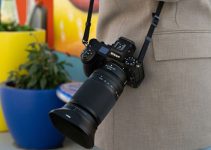Movement is a key advantage of video and cinema over still imagery. It looks nice and while sometimes a little motion can add a dynamic element just for fun and enjoyment there are ways to use movement as a way to improve your storytelling. Film is all about showing, not telling, and movement is an instrumental aspect of doing that well.
Coming from Cinecom.net is a compilation of five key cinematography tricks that everyone should learn. They can all be done handheld as well – no fancy or expensive sliders here – so practically everyone can start using them in their next video project.
1. Creative Camera Angles
When working on an action scene, you’ll want to create a dynamic feel of movement throughout the location. This can be done through the use of creative angles. For example, you could work with some POV shots with a camera mounted to the main character or get ultra-low or ultra-high angles.
Cutting between the different angles makes the actions and movement feel more dramatic. It enhances the action.
2. Push In
This is a simple one. In the example, we have a character deep in thought searching for a solution. They used a handheld push in to act as a tension-filled progress bar for the viewer. You get closer, and closer, and closer and then when you get to just the right point you get the action moment.
Combining the handheld and push in creates some tension. At the finale, they even do a rapid pull out and then start the next shot with the same move to create a dynamic transition.
3. Wide-Angle Close-Up
This is actually a non-move move. This scene involves a character waking up in an unknown location. Getting the camera configured with a wide-angle and moving in close gets an unusual perspective on the face. Then, when the character wakes up you actually don’t move at all.
The character doesn’t know where they are and are trying to figure it out and by not revealing the location to the audience it can help build the tension of the scene as the audience is also in the same mindset of the character trying to figure it out.
Following that, you can follow up with a long shot with the character shown as a small portion of the frame. This should show how they are alone in the space.
4. Tele Lens with Foreground Object
Following the waking up shot is a scene with the “bad guy” returning. Showing the bad buy coming back is a good start, but using a tele lens with some objects in the foreground will give the audience a feeling that they are watching from a safe place. Cutting between these shots and the opposite angle of a tight wide-angle will increase tension.
Next, as the bad guy closes in, you actually start moving farther and farther from the main character. It moves the audience to a safe place while showing the frantic actions and tension of the bad guy closing in.
5. Low Angle with Push In & Straight On Combo
In this case, we have two characters planning a robbery. One is the lead and is coming up with the idea we want to show everyone will trust. In this case you actually want to place the camera lower and angled up towards this character.
It’ll give him a sense of superiority. Add a push-in for emphasis. Along with this, you will want to shoot your other characters straight on with little movement to show they are focused and listening. It’s a simple thing to consider but can make a difference in the feel of the scene.
It’s a good collection of shots and it is worth watching the examples to understand the effect and apply it to your specific shots.
[source: Cinecom.net]
Disclaimer: As an Amazon Associate partner and participant in B&H and Adorama Affiliate programmes, we earn a small comission from each purchase made through the affiliate links listed above at no additional cost to you.
Claim your copy of DAVINCI RESOLVE - SIMPLIFIED COURSE with 50% off! Get Instant Access!




